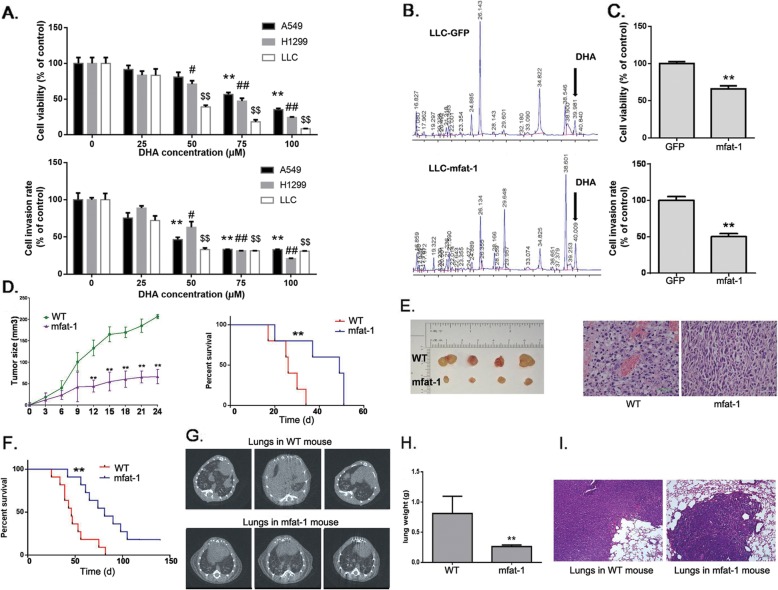Fig. 1.
Exogeneous and endogenous DHA inhibit cell growth, invasion and metastasis of NSCLC cells. a. A549, H1299 or LLC cells were treated with various concentration of DHA, and were subjected to cell growth and invasion assays (n = 4). *, #, $P < 0.05, **, ##, $$P < 0.01 compared to 0 μM DHA group. b. LLC cells were transduced with lentivirus carrying the mfat-1 gene, or GFP as a negative control. Components were identified by comparison of retention times with those of PUFA analytical standard. The amount of DHA is expressed as a percentage of all fatty acid peaks. c. LLC-GFP and LLC-mfat-1 were subjected to cell growth and invasion assays (n = 4). d. LLC cells were subcutaneously injected into female WT or mfat-1 mice (n = 8). Survival of tumor-bearing mice (Right). e. Representative images of implantation tumors (Left). HE staining of tumors (400×) (Right). f. LLC cells were injected into tail veins of female WT or mfat-1 mice (n = 8). Survival of tumor-bearing mice. g. CT images of metastatic lung tumors. h. Mass of excised tumors. i. HE staining of tumors (100×)

